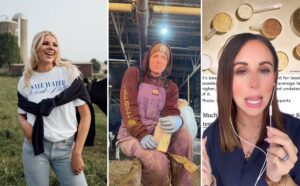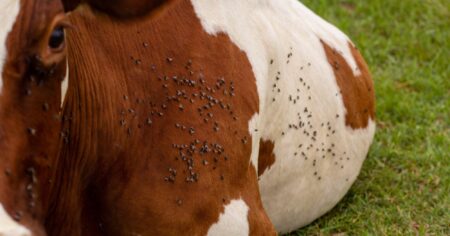Dairy’s latest disruption isn’t coming from almonds, oats, or soy, but from a stainless-steel tank.
Fermentation-derived and cell-cultured “unreal” milk proteins are starting to show up in U.S. retail channels, and one company, Brown Foods, maker of UnReal Milk, is promising what amounts to making “cow’s milk without the cow.”
According to Daily Mail, which included the term “Franken-milk” in its headline, Brown Foods is gearing up for a U.S. retail launch in 2026. Public taste-testing events are already underway, and the company has secured a regulatory green light using the industry-standard GRAS (Generally Recognized As Safe) self-affirmation route, bypassing a lengthy Food and Drug Administration approval process.
They’re using mammalian cell cultures to grow milk-producing cells in bioreactors, then harvesting the proteins, fats, and carbs that look a whole lot like the real thing on paper. The company claims the product can be turned into butter, cheese, ice cream, and more, but with a fraction of the land, water, and carbon footprint of a traditional dairy farm.
On social media and in the farm community, the reaction hasn’t exactly been welcoming. In addition to words like “Franken-milk,” “lab-grown garbage” is getting thrown around a lot, and many producers see this as just the latest shot in a long culture war over how food is grown, labeled, and trusted.
‼️NO!‼️
UnReal Milk is produced using mammalian cell culture— replicating the nutrition, taste, and texture of traditional dairy. It can be processed into butter, cheese, and ice cream, offering a lower-carbon, cruelty-free alternative to conventional milk. Brown Foods claims… pic.twitter.com/4IRQS5mdhe
— Dr. Kat Lindley (@KLVeritas) March 1, 2025
A bypass of the barn, and the dairy farmer
What makes this different from the almond and oat drinks already in the dairy case is that these products seem to aim to replace real milk, not just sit beside it as a plant-based alternative. Cell-cultured or fermentation-derived dairy proteins are designed to be chemically similar (or nearly identical) to the whey and casein that come from a cow.
Another flashpoint is: What to call this stuff? Precision-fermented dairy proteins have already kicked off legal and regulatory debates about using the word “milk” on something that never saw the inside of a milking parlor. Now, cell-cultured “whole milk” takes that fight to a new level.
If the proteins and fats match up in the lab results, the companies behind them will push hard to label these products as “real milk.” To farmers and co-ops, that’s not just confusing; it’s a direct threat to decades of brand trust built on real cows, real land, and real families.
We’ve seen this movie before with margarine, plant-based beverages, and even so-called “imitation” cheeses. The question now is whether regulators will draw a clear line between cow’s milk, the natural secretion of a lactating animal, and a food-tech brew grown in a tank, even if the molecule structure looks similar.

Proponents of UnReal Milk and similar products are framing this as a climate and sustainability win with claims of drastically lower greenhouse gas emissions, less water used per unit of milk, minimal land footprint, no manure lagoons, and no drought risk.
That sounds great in a pitch deck. But from a farm-gate perspective, it ignores the full picture of dairy’s role in rural economies, land stewardship, and upcycling of feed and byproducts. Cows turn things humans can’t eat into high-quality protein. They support local feed mills, vets, equipment dealers, truckers, and processors, not just a single biotech lab with venture capital backing.
It also raises a fair question: Who gets to define “sustainable”? The family that’s been on the same ground for four generations, or the startup with a slick carbon slide and a timeline to exit in five years?
Not to mention, a recent University of California Davis study suggests that other alternatively grown products such as lab-grown meat may have a worse carbon footprint than retail beef. It’s worth wondering if products such as UnReal Milk wind up with similar results?



:max_bytes(150000):strip_icc()/WinterWheat_December_alternative_seed_crops-a2b0b12da4c04eb282dff7e87688e815.jpg)




:max_bytes(150000):strip_icc()/stockyard-Dodge-City-2048x1536-38bcd3b2f08648cfa8aa180ac360fd5c.jpg)
:max_bytes(150000):strip_icc()/49035871198_32f490cc96_o-2dbf8dbc3ee749898c1ad90bb6214cb3.jpg)

:max_bytes(150000):strip_icc()/54163679242_59f748f514_o-0de4af3a868e41c08311efbeff9d9d99.jpg)
:max_bytes(150000):strip_icc()/49036364491_a2bb4f97cf_o-a38e1cdff3a343749dfe125fa53df257.jpg)